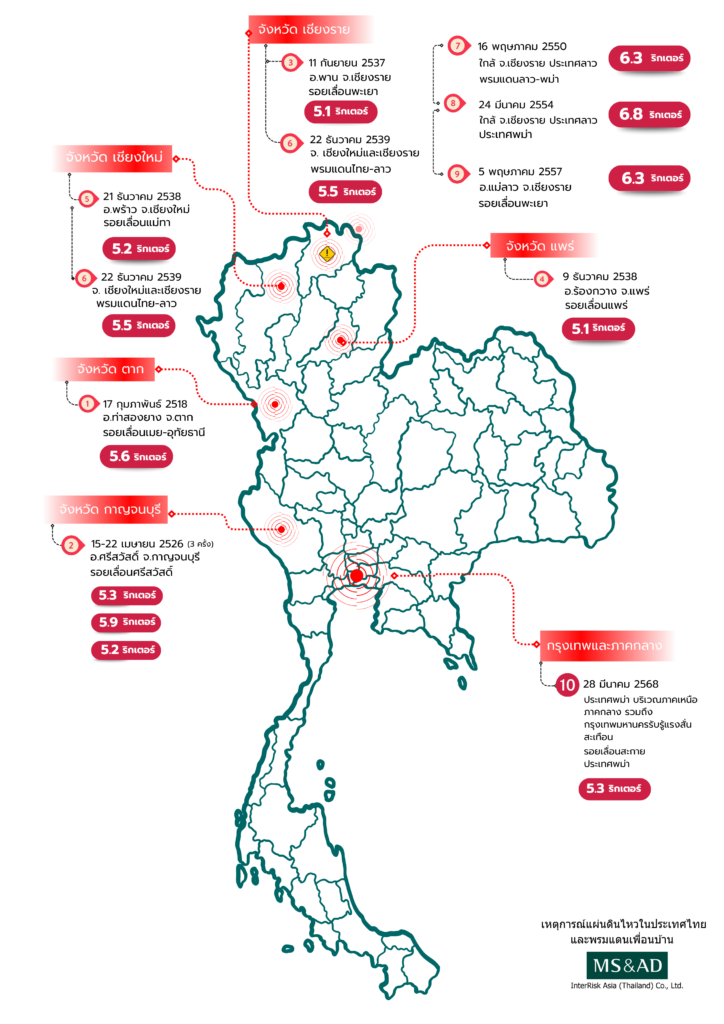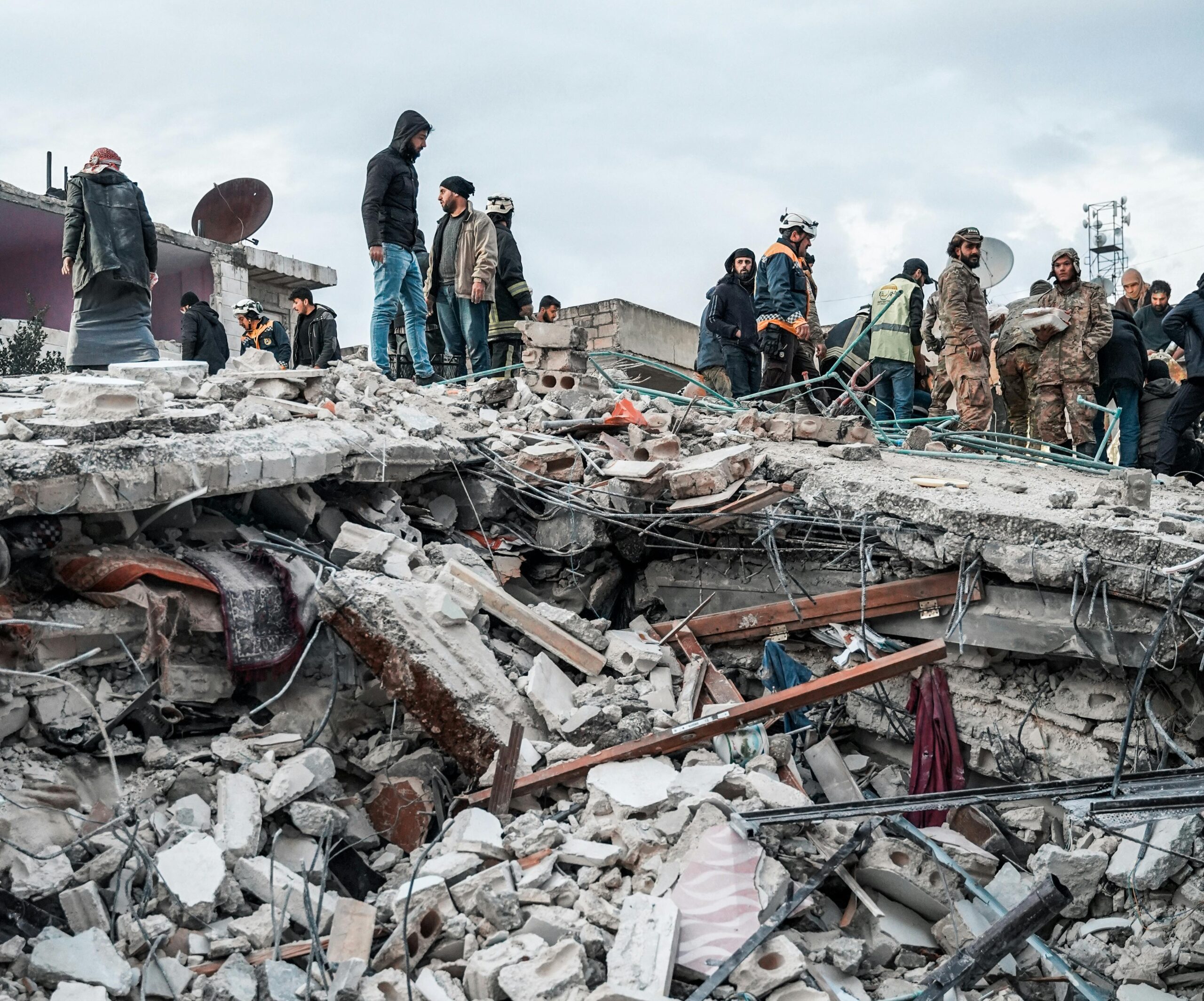On Friday, March 28th 2025, an earthquake in Myanmar shook buildings across parts of Thailand. The tremors alarmed residents and business owners, prompting widespread concern. Although Thailand doesn’t usually rank as a high-risk seismic zone, nearby seismic activity continues to grow in relevance. From a business continuity perspective, organizations must recognize this risk and take proactive steps to prepare.
Understand Earthquake Risk in Thailand: A Hidden Threat

Thailand is not located on the edge of a major tectonic plate but it is affected by active fault lines in neighboring countries, particularly Myanmar. In addition, there are several fault lines within Thailand itself that can cause earthquakes, especially in the northern and western regions.
Steps in Conducting Earthquake with ISO 31000:2018 Risk Management
Risk Identification
The purpose of risk identification is to find, recognize and describe risks. Relevant, appropriate and up-to-date information is important in identifying risks.
Risk Analysis
The goal of risk analysis is to understand the nature and characteristics of each risk, including evaluating its level when appropriate. Based on the information gathered during the risk identification process, we will now analyze the identified risks.

Large earthquakes outside Thailand can still affect the country by transmitting seismic waves across borders. These quakes often originate from nearby regions such as southern China, Myanmar, the Lao People's Democratic Republic, the Andaman Sea, and northern Sumatra Island. As a result, Thailand must remain vigilant and consider these external sources when assessing seismic risks.
Active fault lines capable of sudden movement cause most earthquakes in Thailand. These faults are concentrated mainly in the northern and western regions of the country. Notable examples include the Chiang Saen Fault, Mae Tha Fault, Phrae Fault, Thoen Fault, Moei–Uthai Thani Fault, Si Sawat Fault, Three Pagodas Fault, and Khlong Marui Fault because seismic activity in these areas poses a real threat, organizations and communities must understand their locations to manage risks effectively and prepare accordingly.
1. Physical Losses
Earthquake hazards can lead to both direct and indirect impacts. Direct effects include ground rupture, volcanic eruptions, and the collapse of buildings and structures due to seismic shaking. Indirect consequences may involve fires, gas leaks, tsunamis, landslides, and damage to transportation routes. Therefore, understanding the full range of potential impacts is essential for effective disaster preparedness and response planning.
2. Health and Well-being Losses
People often panic and experience anxiety over the possibility of recurring events. Mental health issues among disaster victims may arise, including stress, trauma, and emotional instability.
3. Economic Losses
Earthquakes can disrupt telecommunication and internet signals, causing interruptions or complete loss of connectivity. Computer systems and networks may stop functioning or experience technical failures. Land and air transportation can also face disruptions, which lead to delays in emergency response, logistics, and daily operations.
Areas in Thailand that are at high risk of earthquakes include regions situated near active fault lines. These high-risk zones are primarily found in the northern and western parts of the country.
1. Areas located near the sources of earthquakes along fault lines, both within and outside the country, are mostly found in the northern and western regions of Thailand.
2. Areas with a history or recorded statistics of past earthquakes and associated damage are more likely to experience future earthquakes of similar magnitude.
3. Areas with soft soil that can amplify seismic waves—such as regions with thick layers of clay beneath the surface in low-lying areas or near river mouths—are more susceptible to strong ground shaking during an earthquake.
Building and Structure
Thailand issued a Ministerial Regulation in 2007 specifying the load-bearing capacity, resistance, and durability of buildings and the ground supporting them in relation to earthquake resistance. This regulation was later updated in 2021. Therefore, buildings constructed before 2007 are likely to be at higher risk of being affected by earthquakes. In addition, while high-rise buildings may have initially considered seismic impacts during their design phase, they may not meet the current standards and requirements outlined in the updated regulation.
Low to moderate probability (infrequent occurrence, but has happened in the past)
According to data from the Meteorological Department and the Department of Mineral Resources, Thailand has experienced eight moderate earthquakes (magnitude 5.0–5.9 on the Richter scale) over the past 40 years, averaging one event every five years. Of these, five occurred in the northern region and three in the western region. Most earthquakes that occur in Thailand generally do not exceed a magnitude of 6.0 on the Richter scale.
Seismic Building Design Standards (e.g., DPT 1301/1302)
Warning Systems (in selected coastal areas only)
Government agencies such as the Department of Disaster Prevention and Mitigation (DDPM) and the Department of Public Works and Town & Country Planning (DPT) have taken steps to improve earthquake preparedness. However, they still struggle to enforce regulations strictly and raise public awareness on a broad scale. These gaps may reduce the overall effectiveness of their efforts.
The timing of an earthquake cannot be predicted in advance. When it strikes, damage happens instantly and can be severe. Therefore, organizations must implement preparedness measures in advance and deploy rapid warning systems to reduce the impact.
Example of Risk Matrix for Earthquake

The assessment of earthquake risks and impacts depends on the specific context of each organization. This example serves as a preliminary consideration for risk evaluation.
Example Likelihood: 2 (It rarely occurs, but there is a history of it happening over several decades.) Consequence: 4-5 (The impact can be severe if it occurs in urban areas or near critical infrastructure.) Therefore, this risk is considered to be at (2,4) or (2,5) , which are Medium or High risk.
Interpretation of Risk Level
Low 🟢 means acceptable/under monitoring, with no need for significant additional measures.
Medium 🟡 means organizations should consider mitigation measures and put preparedness plans in place ahead of time.
High 🟠 means the need for immediate action. Organizations should develop contingency plans and prepare necessary resources in advance to respond effectively if an incident occurs.
Extreme 🔴 means unacceptable / requires immediate action. Organizations must either avoid the risk entirely or implement strong controls to manage it effectively.
Risk Evaluation
Risk Evaluation is a step in the risk management process under ISO 31000, following the risk analysis phase. The objectives are to: Compare the analyzed level of risk with the organization's acceptable risk criteria. Determine which risks are “acceptable” and which are “unacceptable” and require immediate action. Prioritize risks for management and mitigation efforts.
When an organization in Thailand analyzes that an earthquake could impact building structures or disrupt production, the next step is to assess whether this risk is too high to be considered acceptable.
Examples of Questions Used in Risk Assessment:
If a magnitude 6.0 earthquake strikes and our system remains down for three days, will the financial impact exceed the organization's acceptable threshold?
What is the level of risk that the building currently in use may collapse? Is there a backup plan in place?
Do employees know how to evacuate safely?
Examples of Risk Assessment Outcomes

Risk Treatment
The process of selecting and implementing appropriate measures to reduce the level of risk to an acceptable level or to manage the potential impacts of that risk, based on the results of the risk assessment. According to ISO 31000, organizations can manage risk using the following approaches:
Avoid activities that lead to risk, such as not constructing a factory in an area with active fault lines or in zones identified as high-risk in the risk analysis.
Strengthen the building structure to withstand earthquakes.
Install an early warning system.
Conduct emergency evacuation drills.
Purchase earthquake insurance.
Engage contractors or partners to assume responsibility for certain risks within the supply chain.
In cases where the risk is low and the cost of mitigation is too high, the organization may choose to "accept" the risk and prepare response plans as necessary. For example, having a backup plan for working from home in case the office building is damaged.
Examples of Earthquake Risk Management in Thailand
Identified Risks:
The office building is located near an active fault line.
Risk Management Approaches:
Inspect the structure and upgrade it to meet seismic resistance standards.
Identified Risks:
No emergency response plan.
Risk Management Approaches:
Develop a Business Continuity Plan (BCP) and conduct regular evacuation drills.
Identified Risks:
Employees are unaware of the procedures to follow during an earthquake.
Risk Management Approaches:
Provide training and raise awareness through workshops, signage, or instructional manuals.
Identified Risks:
Damage to IT equipment/systems.
Risk Management Approaches:
Develop a data backup plan and implement remote work systems.
Conclusion:
Earthquake risk analysis in Thailand, according to ISO 31000, should consider multiple dimensions—engineering, geology, economic, and social aspects. It should incorporate both qualitative and quantitative data to accurately understand the level of risk and to develop appropriate risk management strategies.


